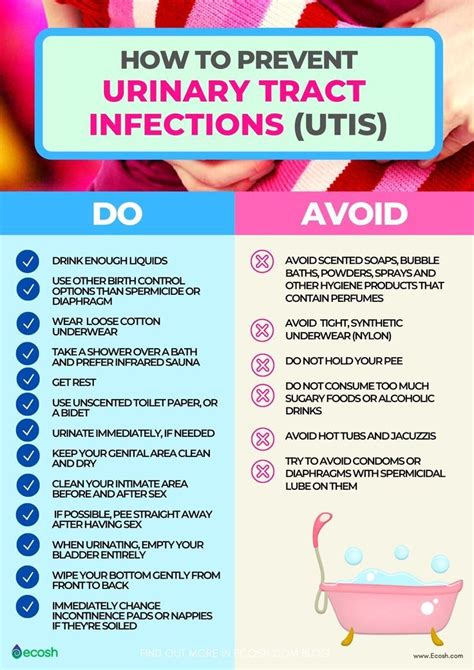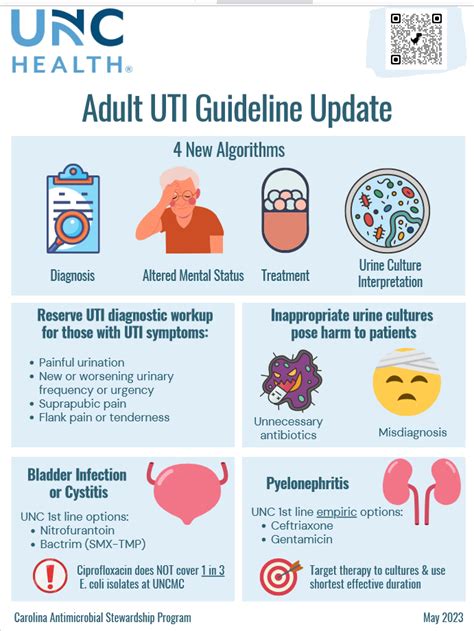Intro
Discover if men can get UTIs, causes, symptoms, and treatments. Learn about urinary tract infections in men, including prevention and risk factors, to protect prostate health and overall wellbeing.
Urinary tract infections, commonly referred to as UTIs, are a type of infection that occurs in the urinary system. While they are more prevalent among women due to their shorter urethra, which facilitates the entry of bacteria into the bladder, men can also contract UTIs. The occurrence of UTIs in men is less common but can be more severe due to potential complications such as prostate issues. Understanding UTIs, their causes, symptoms, and treatments is crucial for both prevention and management.
UTIs can affect any part of the urinary system, including the kidneys, ureters, bladder, and urethra. In men, UTIs are often associated with an underlying condition, such as an enlarged prostate or kidney stones, which can obstruct the flow of urine, creating an environment conducive to bacterial growth. The bacteria Escherichia coli (E. coli) is responsible for the majority of UTIs in both men and women, although other bacteria can also cause these infections.
The symptoms of UTIs in men can vary depending on the part of the urinary tract affected. Common symptoms include a burning sensation while urinating, frequent or intense need to urinate, cloudy or strong-smelling urine, and pelvic pain. In more severe cases, such as when the infection reaches the kidneys (pyelonephritis), symptoms can include fever, chills, flank pain, and nausea or vomiting. Given the potential for serious complications, it's essential for men experiencing these symptoms to seek medical attention.
Causes and Risk Factors

Several factors increase the risk of men developing UTIs. These include age, with older men being more susceptible due to issues like prostate enlargement; uncircumcised status, as the foreskin can trap bacteria; and certain medical conditions, such as diabetes, which can affect the immune system's ability to fight off infections. Additionally, men who use catheters or have a history of UTIs are at a higher risk. Understanding these risk factors can help in the prevention and early detection of UTIs.
Prevention Strategies
Preventing UTIs involves practices that reduce the risk of bacterial entry into the urinary system. For men, this can include staying hydrated to help flush out bacteria, practicing good hygiene, especially after sexual intercourse and bowel movements, and avoiding holding urine for long periods. For those with specific risk factors, such as an enlarged prostate, managing the underlying condition can also reduce the risk of developing a UTI.Symptoms and Diagnosis

Diagnosing a UTI typically involves a physical exam, a review of the patient's medical history, and laboratory tests. The most common diagnostic tool is a urinalysis, which checks for the presence of bacteria, blood, or other abnormalities in the urine. In some cases, especially if the infection is suspected to have reached the kidneys, imaging tests like ultrasound or CT scans may be ordered to assess the urinary tract for any obstructions or damage.
Treatment Options
Treatment for UTIs usually involves antibiotics, which are prescribed based on the type of bacteria causing the infection. The duration of antibiotic treatment can vary from a few days to several weeks, depending on the severity of the infection and whether it has spread to the upper urinary tract. It's crucial to complete the full course of antibiotics as prescribed, even if symptoms improve before finishing the medication, to ensure the infection is fully cleared.Complications and Long-term Effects

Untreated or recurrent UTIs can lead to serious complications, including kidney damage, which can impair the kidneys' ability to filter waste from the blood, and sepsis, a life-threatening condition that occurs when the infection spreads to the bloodstream. Men with underlying conditions, such as an enlarged prostate, may experience worsening of their condition due to UTIs, highlighting the importance of prompt and effective treatment.
Recurrent UTIs
For men who experience recurrent UTIs, additional measures may be necessary to prevent future infections. This can include low-dose antibiotics taken for a longer period, self-care practices like drinking plenty of water, and in some cases, surgical intervention to address any underlying anatomical issues contributing to the infections.Living with UTIs

While UTIs can be uncomfortable and disruptive, most men can manage their symptoms and prevent future infections with the right treatment and preventive strategies. This includes maintaining open communication with healthcare providers about symptoms, concerns, and any changes in urinary health, as well as adopting a healthy lifestyle that supports overall urinary system health.
Nutritional and Lifestyle Changes
Certain dietary changes and lifestyle modifications can help prevent UTIs. These include increasing consumption of foods rich in antioxidants, such as cranberries, which may help prevent bacterial adhesion to the bladder and urinary tract walls, and practicing good sexual health, including safe sex practices and urinating after intercourse to flush out bacteria.Future Directions in UTI Management

Research into UTIs is ongoing, with a focus on developing more effective treatments, including new antibiotics and non-antibiotic therapies, and improving prevention strategies. The development of vaccines against common UTI-causing bacteria is also an area of active research, offering potential for a significant reduction in UTI incidence in the future.
Advancements in Diagnostic Techniques
Advancements in diagnostic techniques, such as point-of-care tests that can quickly identify the causative bacteria, are expected to improve the management of UTIs by allowing for more targeted and effective treatment from the outset.Conclusion and Next Steps

For men experiencing symptoms of a UTI, it's essential to seek medical attention to prevent complications and ensure proper treatment. By understanding the causes, symptoms, and treatment options for UTIs, men can take proactive steps to protect their urinary health. This includes practicing preventive measures, being aware of risk factors, and maintaining open communication with healthcare providers about any concerns or changes in urinary health.
What are the common symptoms of UTIs in men?
+Common symptoms include a burning sensation while urinating, frequent or intense need to urinate, cloudy or strong-smelling urine, and pelvic pain.
How are UTIs diagnosed in men?
+Diagnosis typically involves a physical exam, review of medical history, and laboratory tests such as urinalysis, and sometimes imaging tests like ultrasound or CT scans.
Can UTIs in men be prevented?
+Yes, preventive measures include staying hydrated, practicing good hygiene, avoiding holding urine for long periods, and managing underlying medical conditions.
What are the potential complications of untreated UTIs in men?
+Potential complications include kidney damage, sepsis, and worsening of underlying conditions such as an enlarged prostate.
How can men reduce their risk of recurrent UTIs?
+Strategies include practicing good hygiene, staying hydrated, considering preventive antibiotics for recurrent cases, and addressing any underlying anatomical issues.
We hope this comprehensive guide to UTIs in men has provided valuable insights and information. If you have any questions, concerns, or would like to share your experiences with UTIs, please don't hesitate to comment below. Your feedback and engagement are crucial in helping us improve our content and serve our community better. Consider sharing this article with others who might benefit from this information, and let's work together to promote better urinary health for all.
